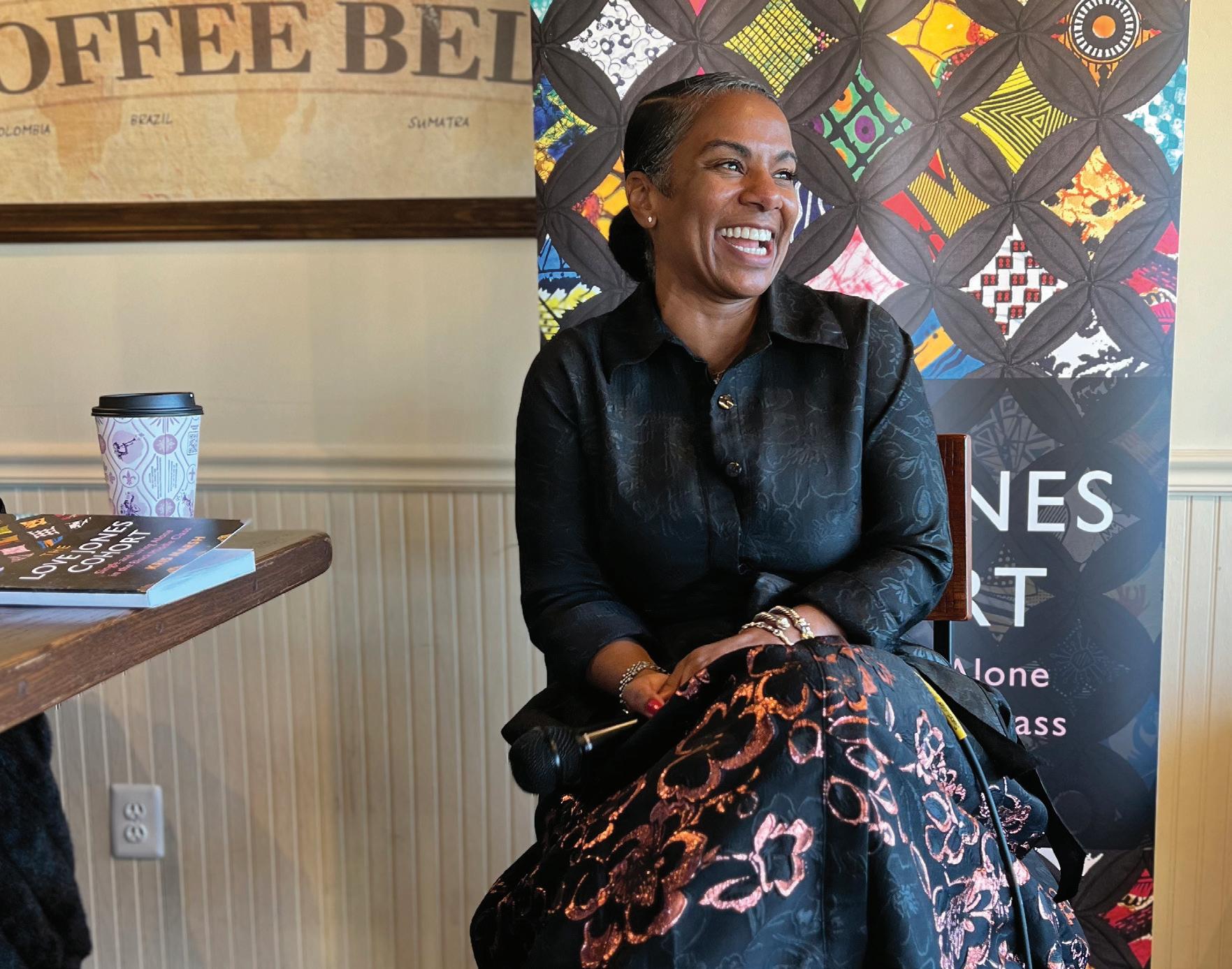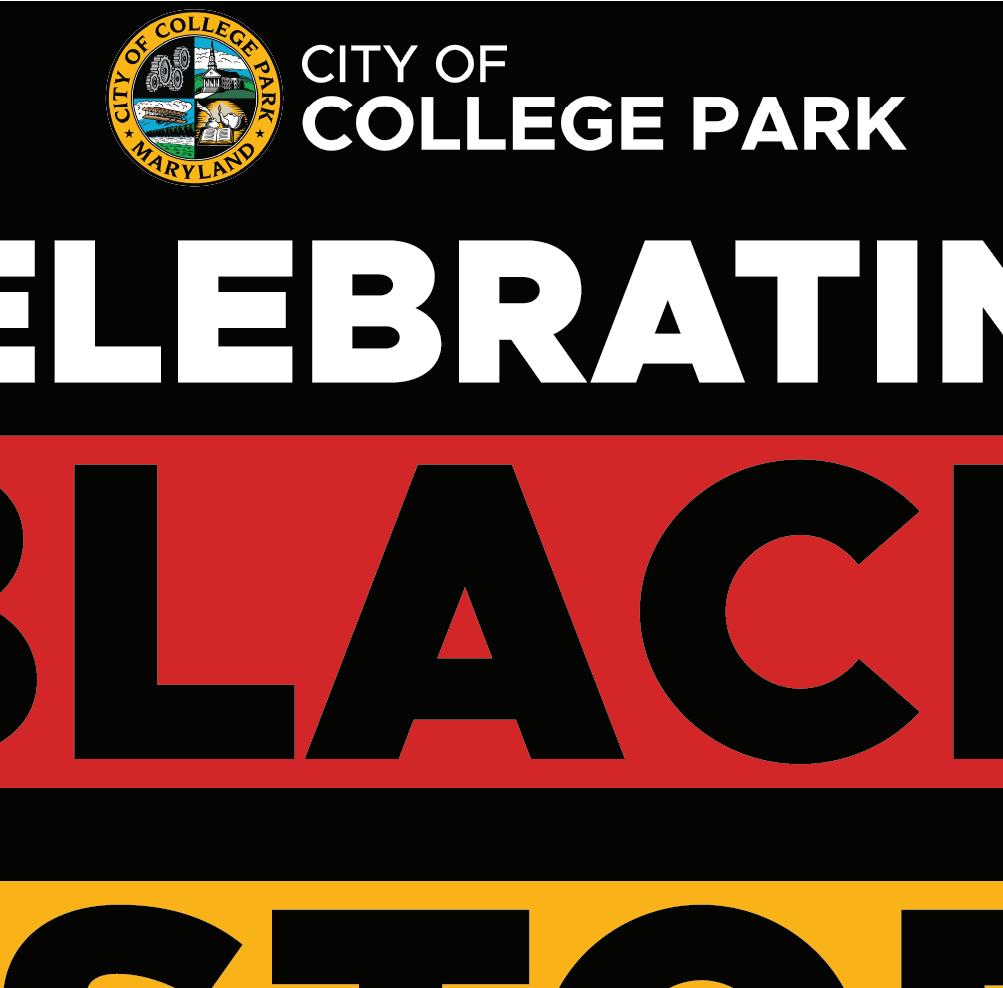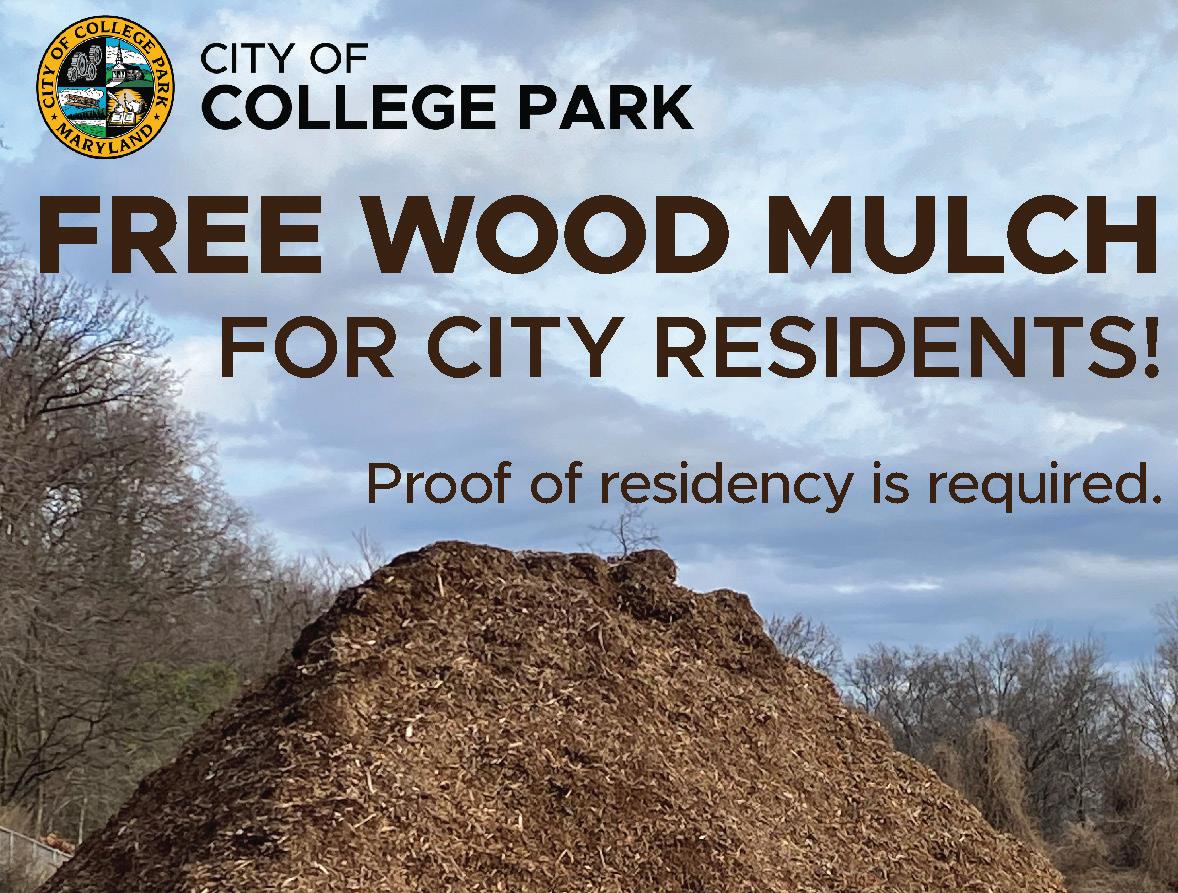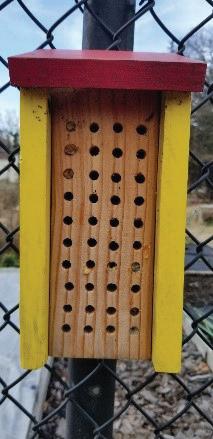School board seeking comments on budget. P.5
Meet county council chair Tom Dernoga and read about his vision. P.7

School board seeking comments on budget. P.5
Meet county council chair Tom Dernoga and read about his vision. P.7
At the Jan. 10 and Jan. 31 College Park City Council meetings, councilmembers discussed a proposal to regulate the ways in which retail businesses, including restaurants, provide shopping bags to customers. The proposed ordinance would ban plastic carryout bags and would require stores to charge customers a minimum $0.10 fee for paper or new reusable bags.
The property on the corner of Route 1 and Melbourne Place, currently home to Town Hall Liquor and Bar, the Campus Village shopping center and a gas station, was purchased several months ago for $36 million by LV Collective, a real estate developer based in Texas. LV Collective is interested in building a student housing complex, with retail on the ground floor, on the site.
Some residents of Lakeland, a historically Black community in College Park, are wary of any proposed development changes in the community, seeing each as a reminder of the urban renewal initiative that the city undertook from the 1960s through the mid-’80s.
Another property in Lakeland, the Alden-Berkley Townhomes, on Lakeland Avenue, will be
Businesses could continue to provide plastic bags, free of charge, for certain items within the store, including bulk items at grocery and hardware stores, bakery goods, ice, dry-cleaned clothes, and for wrapping items like meat, fish and flowers. The ordinance would also designate a week each year when businesses could offer free reusable bags to their customers.
The ordinance aims to promote the
city’s sustainability goals by reducing shoppers’ reliance on single-use bags.
Martha Ainsworth, of the Prince George’s Sierra Club, and Sarah Price, with the Maryland Retailers Association, attended the Jan. 10 council meeting and spoke in support of the proposed legislation. Price said that they took a close look at the draft ordinance and were supportive of the $0.10 fee, which would help offset retailers’ costs for paper bags and
set consistent expectations for customers. The proposal would also set a floor for the bag fee, which would quell inadvertent competition among businesses.
Councilmember Kate Kennedy (District 1) noted that the combined support from the Sierra Club and the Maryland Retailers Association should help establish broad community support, as well. Retailers largely understand and

 By Braden Hamelin
By Braden Hamelin
Growing up in the middle of nowhere, in the western Pennsylvania mountains, Jared Mitasky
watched his neighbors pool their limited resources to keep their community up and running. Understanding the value of volunteering became ingrained in Mi-

tasky’s everyday life and has stuck with him into adulthood. When he moved here from Pennsylvania, in October 2021, he packed up that value and brought it with

him. This Berwyn resident’s innovative brand of volunteering has already made a mark in his new neighborhood.
Mitasky’s connections here sprouted when he joined the Buy Nothing College Park/Berwyn Heights group on Facebook,


The signs are all along the Route 1 Corridor:
“We pay up to $700 for unwanted cars, vans, trucks towed free” and “We buy all used cars $150-$600.” The posted offers are loosely based on world-wide commodity prices, and the size and condition of the car. A car is a storehouse of hazardous materials — gasoline, oil, brake fluid, AC refrigerant, antifreeze, asbestos and more. Cars built after 1999 have at least two highly explosive airbag inflators, too. Despite these hazards, someone will pay at least $150 for the opportunity to tow one away.
“Automobiles have the highest recycling rate of any consumer product,” noted Greg Condon, president of the Maryland Association of Car and Truck Recyclers. “Approximately 80% of a car is recyclable, and an extremely high percentage of cars are ultimately reused.” Condon is also president of Condon’s Auto Parts in Westminster, Md. Auto parts seem to defy the law of the conservation of matter, which states that the whole is equal to the sum of its parts. When it comes to automobiles, the parts can add up to more than the whole. There is an ongoing conflict between car manufacturers, who would like to have a monopoly on replacement parts, and independent mechanics and insurance companies, who have to pay for them.
Dealerships charge very high markups. A 1999 study com-
missioned by the Alliance of American Insurers found that assembling a car that would have been worth $25,000 on a new-car lot using individual parts purchased from a dealership would have cost $100,000. And that was almost 25 years ago; imagine what it would cost now. Car companies claim, though, that remanufactured and recycled parts are inferior.
This is why scrounging for parts from a wreck can be so lucrative, Condon said, “if I paid $1500 for a 2012 Toyota Camry with 145K miles and a body in good condition, but a bad transmission, I would aim to sell the parts for $4-$5,000.
Managing Editor Mark Goodson mark@streetcarsuburbs.news

The most expensive vehicle I ever bought was a luxury SUV, a 2018 Yukon Denali with 60,000 miles, which had been totaled in a collision. I paid $14,000, because I could sell the engine alone for $7,000.”
Condon’s company is a member of the Automotive Recyclers Association, (ARA) which supplies premium green parts — used original parts that have been tested and are guaranteed for at least six months (lifetime warranties are available on some used parts). Condon bought the Denali at an insurance auction; he likely could have retrieved its complete maintenance records from Carfax.
Advertising Sales Manager
Miranda Goodson
It may make sense to invest $7,000 in a late-model luxury SUV that’s still in good shape. But why would anyone pay even $150 for a rusty 1990 Camry with 300,000 miles and a blown engine? There’s a good reason: Scrap cars can fetch a good price. And while prices do fluctuate, the scrap metal valuation site iScrapapp.com lists the average price for scrap steel in the DMV at $158 per ton this month.
Most scrap yards, including century-old Joseph Smith & Sons, on Kenilworth Avenue in Capitol Heights, will only buy wrecks that have been depolluted. At minimum, the depolluting process involves removing the battery and tires, and punching a large hole in the gas tank. A thoroughly depolluted wreck has had all fluids drained, and the gas tank and airbag inflators removed. Removing all fluids and specific parts keeps Smith’s giant shredder from bursting into flames and produces scrap that can be safely exported around the world.
A depolluted Camry would probably be worth $150 for its steel alone. Some parts of an old wrecked car, such as the seats, are usually worthless, but almost everything else can hold some degree of value. That Camry has at least a dozen electric motors and about a mile of wiring — that amounts to about 50 pounds of copper. Bare copper wire sells for more than $3 a pound these days — more than $6,000 per ton as scrap. Scrap aluminum goes for about $1,000 per ton.
2012 Sonata that needs a new starter? Your options might hinge on how quickly you need to have your car back on the road and how fat your wallet is. College Park Hyundai has new starters in stock priced at about $389. Purchase one online from another Hyundai dealer, and it might set you back $266 — but take three days to get to you. Or you could head to the NAPA store on Berwyn Road and pick up a rebuilt starter for $148.99 plus a $38.50 core charge; bring your old starter back to NAPA for recycling, and they’ll refund the extra charge. The starters (and other parts, like alternators and water pumps) on the shelves at AutoZone, Pep Boys and NTB are usually remanufactured, which means they have been restored to like-new quality.
Then there’s your local green parts recycler, such as Andy’s Auto Parts in Bladensburg, which is an ARA member. Andy just might have the right starter in a wrecked car on his lot that he might even be able to pull out in a half hour. He recently had just the part for that Sonata and would have sold it to me for $50, and with a 60-day guarantee.
A nationally-recognized community newspaper chronicling the here and now of College Park.

Mailing address: PO Box 132, Hyattsville, MD 20781
The College Park Here & Now is published monthly by Streetcar Suburbs Publishing., a 501(c)(3) nonprofit corporation. Editors welcome reader input, tips, articles, letters, opinion pieces and photographs, which may be submitted using the mailing address above or the email addresses provided. StreetcarSuburbs.News
Associate Editor Nancy Welch nancy@streetcarsuburbs.news
Writers & Contributors Dan Behrend, Jenna Bloom, Rick Borchelt, Alice Carlson, James Cirrone, Braden Hamelin, Alec Lynde, Joe Murchinson, Lauren Reeder, Paul Ruffins, Kit Slack, Stephanie Stullich
Layout & Design Editors Ashley Perks, Valerie Morris
Web Editor Jessica Burshtynskyy
Advertising

advertising@streetcarsuburbs.news 301.531.5234
Business Manager Catie Currie
Board of Directors
Joseph Gigliotti — President & General Counsel Melanie Dzwonchyk — Interim Secretary Stephanie Stullich — Treasurer Gretchen Brodtman, Bette Dickerson, Nora Eidelman, Maxine Gross, Joe Murchinson, T. Carter Ross Katie V. Jones, Mark Goodson— Ex Officios
Circulation: Copies are distributed monthly by U.S. mail to every address in College Park. Additional copies are distributed to popular gathering spots around town. Total circulation is 9,600. CPH&N is
and
And any car manufactured in the U.S. since 1975 has a stainless steel catalytic converter that’s loaded with extremely expensive materials, including platinum, palladium and rhodium. That Camry’s converter is worth at least $180.
So what choices do you have on the table for your
So, which part might end up in your Sonata? If you’re not replacing the starter yourself, you’ll likely have to rely on your mechanic to figure that out — just hope you’re working with an honest one who will do some research, find a good part at a reasonable price and give you a guarantee. “Many environmentalists believe that businesses should take back and reuse almost everything they sell,” says Sandy Blalock, ARA’s executive director. “Well, about 25% of the steel in new cars has been recycled, and many of the old starters and alternators that our members can’t use become cores that are re-manufactured for the auto parts chains. We’re leading the world in reducing prices and pollution by reusing and recycling.”
Ruffins is a citizen scientist and professor of curiosity.
In our January edition, we published a review of College Park’s grocery stores. A concerned reader pointed out that our review didn’t include MOM’s Organic Market, and we regret that omission. The article also indicated that you can find a copy of the Here & Now in every grocery store in the city, though that is no longer the case; Trader Joe’s does not carry the paper.




College Park Animal Control Officer Rebecca Bailey loves her job because it gives her the opportunity to help animals. “They don’t have a way to advocate for themselves”, she said. “I know I’m meant to do this job.”
An animal control officer (ACO) has a wide range of responsibilities: picking up stray pets; responding to complaints of neglect, cruelty, and code violations; handling sick or aggressive wildlife; and educating the public about animal care. Bailey commented, “There really isn’t a typical day. I can be reuniting a pet with its owner one day and rescuing wildlife the next – or all in the same day.”
Bailey has loved animals from an early age. “Sometimes people can be hard to please,” she said. “But all I have to do is take a dog for a walk, and that’s the happiest day of their life.”




College Park Department of Public Services Director Bob Ryan said that only five of the 27 municipalities in Prince George’s County have an ACO; College Park has had one for at least 30 years. Ryan said that while the term used in the profession is animal control, the work focuses at least as much on animal welfare.




The city has a small animal shelter where it temporarily houses rescued pets including dogs, cats, birds and bunnies. Bailey said her first priority each day is caring for any animals in the shelter, but she spends most of her time responding to calls for service — complaints about barking dogs, alerts about cats and kittens in need of rescue and dogs running at large. She always checks strays for identification, including microchips, and often asks residents to spread the word about rescued pets through social media.
Ryan said the city council and residents appreciate having an ACO who can respond to calls quickly. Bailey noted, “I’m usually just five to 15 minutes away.” Ryan also noted that having an AOC who knows the city and can develop relationships with residents is a significant advantage. County ACOs, in contrast, serve a much larger geographic area.



Pets rescued in College Park who are not reunited with their families may be put up for adoption. Bailey said, “the most beautiful thing about having a pet” is that “animals are so ready to love and be loved.”
Aron Bender, 9, is in love with his newly adopted cat Luna, who was picked up as a stray in the Hollywood neighborhood, just six blocks from Bender’s home. “When I met Luna, I just knew I wanted her,” Aron said. “Having a cat is fun. Whenever I come in the room, she says ‘meow’ — when I play with her, she’s crazy. At night she sleeps with me.”
Bryan Draper initially considered fostering a single kitten but ultimately decided to adopt two of them because, as he said, “cats are meant to come in pairs,















especially if they are young.” His kittens, Paco and Tipitina, love to play together, he said, adding, “[They have] frequent steeplechases through the apartment. I am so grateful they came to me!”
Bailey has community partners who help her in her work. Volunteers with the College Park Animal Welfare Committee assist Bailey in a number of ways, including staffing twice-yearly rabies vaccination and microchipping clinics and writing articles on animal issues for College Park’s “Municipal Scene” online magazine.
Bailey also works with ACOs in other nearby municipalities, especially Greenbelt, whose own ACO helps to cover the College Park shelter when she is on leave. A few months ago, a kitten from College Park and a second from Greenbelt were placed with a foster who volunteers for both cities; the two kittens bonded and were adopted out as a pair.
Other rescue groups often help with referrals and finding foster homes for adoptable pets. The Society for the Prevention of Cruelty to Animals (SPCA) of Anne Arundel County identified a foster placement for a disabled kitten that Bailey rescued in College Park’s Sunnyside neighborhood; his hind legs were paralyzed, but the foster knew how to handle that, and eventually the SPCA found him a purrfect home. In another recent case, Mid-Atlantic Poodle Rescue (MAPR) helped with a standard poodle who was surrendered to College Park. The dog had been neglected and had severely matted fur, but a sweet and loving personality. Bailey had a groomer address the matted coat, and MAPR placed him in a foster home and used their network to find him a forever home.
Bailey works particularly closely with Beltsville Community Cats (BCC), collaborating on trap-neuter-vaccinate-release (TNVR) efforts to humanely reduce the population of feral cats. The City of College Park and BCC also jointly operate a cat adoption center at the Laurel Petco, where they showcase College Park and Beltsville cats that are ready for adoption.
BCC president Sallie Rhodes said her group often receives calls about cats in College Park because people don’t know who to call; residents often don’t even know that College Park has an animal control officer. But, she said, “We coordinate really well; we make referrals to [Bailey], and she makes referrals to us.”
Bailey said, “With animal welfare jobs, community is what it’s all about. We all lean on each other and help however we can.”
College Park is always looking for volunteers to foster pets for a few days, weeks or months and to help with caring for cats in the Laurel Petco adoption center. For more information, contact College Park Animal Control Officer Rebecca Bailey at animalcontrol@collegeparkmd.gov or 240.375.3165.










Last week, my life turned upside down. My husband and I were walking out of our apartment with our 2-year-old and infant, excited that we could take our toddler to his favorite store. We were stunned to find our reserved parking spot empty. After the initial shock and having to explain to our toddler that he wouldn’t get to go on the trip he’d been asking about for days, reality started to set in. We had many immediate concerns on the surface. My husband was starting a 6-day work week schedule the next day and would need his car to commute, and our medically complex toddler had multiple appointments in the coming week that I would need to take him to. Our kids’ car seats were in the car, so we were still in a bind, even if we could find a ride. Our financial situation is precarious, making it difficult for us to replace car seats, much less a car. And our living situation is far from ideal, too; we need every penny we’ve saved to move when our lease is up.
All of these overwhelming concerns came to mind first, of course, but after that first day of panic and conversations with insurance adjusters and police, deeper losses began to surface. I drove that car to my first date with the man I would end up marrying, and I drove it to my wedding. Both of my babies came home from the hospital in
that car. It was with me for all of the most significant moments in my life — and now it’s gone. My toddler's special car toy and my baby’s favorite teether were both in that car. But the loss that’s been hitting me hardest is the loss of the stack of projects we had just picked up from our toddler’s art class. I prioritized bringing in the groceries and left that artwork on my dash, assuming I would be able to grab those treasures the next morning. The project at the top of the pile was this lopsided owl that I wanted to hang in my son’s play area. It may be silly, considering how significant the other concerns are, but I’ve been missing that owl every day.
My toddler’s traumatized, too, which breaks my heart and fills me with rage. A few days ago, he started crying, saying, “We have to turn around, we can’t go home, they took our home away.” His whole world feels unstable, and I can't figure out how to love that kind of anxiety away, no matter how much I try.


Overall, I'm thankful for our safety. Carjacking is common in my area and I’ve been very anxious about what I would do in that kind of situation.
I reached out to retired police sergeant Kevin McSwain to learn more about how to protect myself against this type of crime. According to McSwain, there are practical steps we can take, including using anti-theft devices such as a steering wheel or brake lock, or a car alarm. A brightly lit area can deter thieves, and security cameras may offer added protection. McSwain also said community, itself, can play an important part. When people are out and about, watching out for each other, crime rates are typically lower.
McSwain walked me through what police do when a car is reported stolen. The vehicle’s VIN and plate number, along with a description, are entered into a database that will alert the police if the car gets towed or shows up in a routine traffic stop. The police use tag readers — devices that alert police officers on the road

if a stolen car is located in their vicinity.
McSwain added that the vehicle recovery rate depends on why the car was stolen. Some people steal cars to go on joy rides or commit other crimes and leave the vehicles when they’re done. If a vehicle’s stolen for parts, though, recovery’s a longshot.
McSwain emphasized that one should not engage with a perpetrator. Property can be replaced; personal safety is paramount.
McSwain had strong advice about carjackings, too, which typically occur when a driver’s alone and distracted — say in a parking garage, loading things into the trunk. He said to be especially aware of surroundings and to note large objects, like dumpsters, or dark areas in a covered lot that could give someone a spot to hide. He noted that it’s wise to ask a friend or neighbor to watch out for you as you’re heading to your car, too.
If you do end up in a carjacking situation, McSwain advised to remember two words: cooperation and communication. The most important thing is to ensure that the perpetrator feels that they are in control; McSwain underscored that you have a better chance of being safe if they feel calm. Never attempt to fight the perpetrator, and cooperate with them to the extent you safely can.

As I reflect on my conversation with McSwain, I keep thinking about how much he emphasized vigilance. I plan on being much more aware of myself, my loved ones and my vehicle. And I hope that my story helps you become more aware and that you learn how to be safer, too.

The vehicle recovery rate depends on why the car was stolen. Some people steal cars to go on joy rides or commit other crimes and leave the vehicles when they’re done. If a vehicle’s stolen for parts, though, recovery’s a longshot.
In a Feb. 3 interview, state Sen. Alonzo T. Washington said a top concern he hears when he knocks on doors in Prince George’s County is about school funding: “They all say, ‘Where does the money go?’”
This month, county residents have an opportunity to take a close look at county school funding and voice their opinions. The Prince George’s County school board is holding work sessions and hearings on a proposed $2.75 billion annual operating budget for the next fiscal year, which begins July 1.
Monica Goldson, CEO of Prince George’s County Public Schools (PGCPS), presented the draft budget to the school board in December 2022, saying her focus for the coming year will be on math, school climate and mental health.
Goldson is budgeting for 20,857 full-time equivalent (FTE) positions next year to serve approximately 130,000 students attending the county’s 204 schools. This level of staffing represents an increase of about 500 positions.
During her presentation, Goldson highlighted a $94 million increase in employee compensation, which includes wage increases agreed to in the county’s contract with the local teachers union that was ratified in September 2022.
According to The Washington Post, some certified teachers in high-needs schools will see raises of as much as $22,000 next school year under the contract.

At a Feb. 2 school board meeting, Kristi Murphy Baldwin, PGCPS chief human resources officer, said that her office calculates that teachers who spend 20 years with the county school system make more money than teachers with any other school district in the D.C. area.
Baldwin also noted a crisis in teacher staffing at the meeting and discussed recruitment efforts at local historically Black colleges and universities, as well as local programs designed to encourage students and those seeking a career change to pursue teaching.
Employee compensation, including wages and benefits, come to $2.2 billion in the draft budget — more than 80% of the total. The second largest expense is for contracted services, about $355 million, or 13% of the total.
Goldson proposes adding 26 full-time school-based technology coordinators, each assigned to support a small cluster of schools, at a cost of $3.8 million. The budget also adds $4.7 million for 60 new FTE positions at early childhood centers.

Goldson’s budget forecasts that county schools will receive $1.4 billion from the state, $970 million from the county and $230 million from the federal government. About $74 million of the state contribution will come through the Blueprint for Maryland’s Future program, and targeting areas of concentrated poverty.

The state and county governments are each forecast to contribute about $110 million more than they did during the last fiscal year; this increase is due to changes in the state-aid formulas and required county contributions. Federal funding will decrease by about $84 million as pandemic relief programs expire.
Funds for school construction and repairs are part of a separate capital improvement budget. Last fall, the board approved annual expenses of $258 million for fiscal year 2024.
The school board can amend the operating budget this spring, after which it will go to the county council as a budget request and then back to the school board for final approval in June.
Board-level budget meetings in January and February have been courteous and collegial, following two years of significant controversy among board members that often left the school board at an impasse.
Former Board Chair Juanita Miller refused to step down this summer after County Executive Angela Alsobrooks called on her to do so; Miller posted a public defense which remains on the board’s website.
In November and December 2022, a Maryland administrative judge held eight days of disciplinary hearings to evaluate charges that six current and former board members
brought against Miller, accusing her of misconduct, neglect and incompetence. A decision has not been issued in that case.
According to Maryland Matters, in January, the citizens group Citizens for Accountability in PGCPS Board of Ed called for the withdrawal of state charges against Miller.
Miller is still on the board but stepped down as chair in December 2022. The board struggled to find a majority willing to support a replacement but finally elected former vice chair Judy Mickens-Murray on Jan. 12.
On Jan. 5, CEO Goldson announced her retirement, effective at the end of the school year, when her current contract ends. She cited political infighting among members of the board of education in an email



It takes more than a lawn sign to sell for top dollar A professionally staged home looks great in photos, which attracts more buyers, helping homes sell more quickly, for more money That's why I offer all my seller clients complimentary staging services If you ' re considering selling and want to maximize your net, it's critical to present your home in the best light I have a proven system for doing just that I offer:
announcement. Goldson has worked for PGCPS for nearly 20 years and has served as CEO of county schools since July 2018.
State Sen. Washington announced Jan. 27 that he is again advocating, at the state level, for establishment of a permanent office within PGCPS charged with reducing waste, fraud, and abuse. This office would be independent of the school board, and would replace the county schools’ internal audit department, which is budgeted in the draft for 28 FTE positions.
The Prince George’s County House Delegation supports the initiative, and Washington said that the county council does, too. Washington hopes that an independent, politically insulated office could help increase public confidence that money allocated to the county public schools is well spent.
The next public hearing on the county’s school budget will be held on Feb. 13 at 7 p.m.
For details on how to participate in a hearing, go to pgcps.org/offices/ board-of-education/participatein-a-board-meeting-or-a-publichearing.
For more information on the draft budget, go to pgcps.org/offices/ budget-and-management-services
If you have any home questions, I'm here to help you consider your options!
Thinking about your next move? Give me a call. I'll help you navigate what's next!
Kris Marsh is, in a word, energetic. And she’s passionate about what she does, too — so make that two words. Marsh has been a tenured associate professor of sociology at the University of Maryland (UMD) since 2014 and has led multiple police departments in implicit bias trainings since 2015. Yes, she’s dedicated almost a decade to these efforts.
And for the last seven years, Marsh has been writing a book about middle-class Black people who are single and living alone. The book examines the
experiences of a group of 62 unmarried Black women and men who do not have children. The Love Jones Cohort is due to be released in February.
“It really is a larger story. You can superimpose it on any racial or ethnic group, but I’m trying to show how people are living full lives as single adults,”
Marsh said.

The book’s title is a mashup that refers to the cohort Marsh studied and the 1997 movie, "Love Jones," the plot of which revolved around a romance between two Black professionals. Marsh called the romantic comedy “a staple in Black America.”
In her book, she details how scholarship on singlehood is too often focused on the experience of white Americans, even though marriage rates are declining most clearly among Black Americans. According to Pew Research, 47% of Black adults are single. The number of single white adults is much lower, at 28%.

Additionally, two issues constrain Black people’s dating choices: education disparities between Black and white people, and the yawning racial wage gap. There is also a gender-based education gap within the Black community, with
more women than men seeking higher education and attaining bachelor’s degrees.
Marsh contends that when it comes to being single, there’s a lot we can learn from Black women. They’ve been thriving at this for quite some time, she said. In the cohort Marsh studied, the women tended to create nurturing, sisterlike bonds with other women. The men she interviewed didn’t have those same strong relationships with other men, she said.
“The women would sometimes feel lonely, but they had … girlfriends that they could draw from. The guys didn't have quote unquote boyfriends to draw from,” Marsh said. She noted that men are more likely than women to rely on romantic relationships to try to resolve loneliness.
Marsh interviewed men and women for her book during the summer of 2015. That same year she began writing; in her mind, she was going to finish the book in a year or so. That plan was derailed when she began leading implicit bias training sessions for the Prince George’s County Police Department. Now that she’s done conducting police training programs altogether, she’s glad to move on, but she does hope she made a difference.

“I see the officers now whenever I'm out and about, and they often say, ‘Dr. Marsh, whether or not we loved or hated your class, we're still talking about some of the content that you've given us over the years.’ So, at a minimum, I've sparked a conversation,” she said.
But while going through it, Marsh said it was hard work, and it took energy away from other things she was trying to accomplish, including completing The Love Jones Cohort.
“Some days were good, some days weren't good,” Marsh said. “I didn't really have the mental capacity to spend time working on the book.”
To get through the harder days, the UMD professor revived an old hobby — golf. And
after some lessons, she’s confident enough to say she’s “pretty darn good,” though she admits she has some bad habits.
“I took a 20-year hiatus,” Marsh said. “I took lessons again in 2019, and I started to play. … then COVID[-19] happened, and golf was one of the sports you could still play.”
Prince George’s County happens to be a fine place for a golfer to live, with both Paint Branch Golf Complex and the University of Maryland Golf Course right in your backyard — and Gunpowder Golf Course is just a 20-minute ride from campus. But proximity to the greens isn’t why Marsh settled here.
She said came here because the university was the only place she wanted to start her academic career. And where better to study the Black middle class than in Prince George’s County, one of the wealthiest majority-Black counties in the United States. “I live, work and play golf in my own human laboratory. It's amazing,” she said.
After The Love Jones Cohort drops in February, it’s safe to expect more published works from Marsh. In 2017, she traveled to South Africa and studied the Black middle class there, noting striking similarities to America’s own Black middle class. She said she also has a proposal currently under review at NYU for a book that examines racism, classism and sexism in the golf world. But if there’s anything Marsh wants people to take away from her upcoming book, it’s to let go of the stigma around being single and living alone.
“Singlehood is not a bad thing. It allows you to spend time with yourself,” Marsh said. “If you want to be partnered, I hope it happens. But embrace your singleness first. Be happy, healthy and whole as a single person, and then consider a relationship.”



City Residents can enter into the Black History Month Book Giveaway to claim up to three free books for young readers
February is Black History Month!
The observance was first celebrated in 1926, when Carter G. Woodson established Negro History Week as a way to focus attention on Black contributions to the world. It was timed in February to coincide with President Abraham Lincoln’s and Frederick Douglass’s birthdays, as both men symbolized freedom.
Fifty years later the event was expanded, and Black History Month was officially designated in 1976 by President Gerald R. Ford, where he told Americans to “seize the opportunity to honor the toooften neglected accomplishments of Black Americans in every area of endeavor throughout our history.”
This annual monthly event spotlights the contributions of African Americans and promotes the teaching of Black History.

Every year, the Association for the Study of African American Life and


History chooses a theme for Black History Month; this year’s theme is “Black Resistance.”

Why is Black History Month important today? Although America represents values of independence, justice, and freedom, African Americans have been systematically restricted from attaining these ideals.
Historic policies rooted in racism, such as segregation, legally discriminated against Black Americans. By establishing rules that prevented Black people from claiming their rights, America denied full citizenship to a group of people while promising life and liberty for all.
However, generations of Black Americans have defied systematic oppression through moments of protest, civil disobedience, and personal achievement. From Frederick Douglass’ escape from slavery to Kamala Harris’
appointment as the first African American Vice President, these acts of resistance challenge systematic inequalities and remove barriers to full citizenship.
Black History Month highlights these acts of resistance to demonstrate the true price of equality. By celebrating, learning, and teaching about “Black resistance” this Black History Month, we honor Black people’s contributions to advancing American democracy.
To celebrate Black History Month, the City is hosting a book giveaway! City of College Park residents can claim free copies (of up to three books) that educate and inform on Dr. King’s life and his work toward Civil Rights. Claim your free books at www.collegeparkmd.gov/ BHMBookGiveaway.

To learn more about Black history in College Park, check out the Lakeland Walking Tour at www.
collegeparkmd.gov/LakelandTour. To learn more about Black History month, visit the Library of Congress’s blackhistorymonth.gov or the National Museum of African American History and Culture at nmaahc.si.edu.
College Park residents may be unaware of the numerous benefits they receive from living in a city that is designated a Tree City U.S.A. by the Arbor Day Foundation.
Urban tree benefits that positively impact College Park residents’ and visitors’ health and safety include:
• Trees act like air filters by absorbing carbon dioxide and other airborne pollutants and particulates thereby contributing to cleaner air.

• Tree canopy coverage can help to lower blood pressure, and has been reported in various studies to reduce anxiety, depression, and stress.
• Trees can contribute to improved cognitive function.
• Trees emit natural protection substances called phytoncides into the atmosphere that can help improve the human immune system.
• Forested buffers along highways like the Beltway can potentially reduce noise.
• Tree-lined streets can be 7 to 9 degrees cooler than nontree-lined streets, which can reduce the urban heat island effect. Lower temperatures during summer heat waves can reduce the probability of heat-related illnesses.
• Tree-lined streets can help to reduce traffic speeds by visually appearing to narrow the width of the street, thus reducing the potential for higher-speed accidents. Street trees also provide a visual barrier between vehicles on the street and pedestrians on the sidewalk and may help to reduce vehicular accidents with pedestrians.
• Trees can help to reduce flooding by intercepting rainfall and absorbing rainwater that reaches the ground. Tree roots also stabilize the soil, which reduces soil erosion and improves water quality.
Older trees potentially provide more benefits than younger trees. An older tree’s canopy is usually larger and provides more shade than a younger tree with a smaller canopy. Older trees can potentially provide more environmental
services by carbon sequestration as Carbon Dioxide (CO2) is absorbed by the tree to generate its food and energy through the process of photosynthesis. As trees grow, they store carbon by developing wood, and when they die some of the carbon is stored in the soil in the remaining roots and their decomposition.
How can the residents of College Park assist to increase the canopy in the city, to help ensure that future residents have access to the health benefits of trees?
• Maintain trees by having an International Society of Arboriculture (ISA) certified arborist inspect mature trees in your yard. Dead and/or damaged limbs may require pruning or removal for the safety of people or structures below. Occasionally, trees may benefit from supplemental treatments to help relieve soil compaction or provide additional nutrients that may be lacking.
• Contact the city to request a street tree planting in the rightof-way area, which includes the grass strip between the curb and sidewalk, or to report any maintenance issue related to trees maintained by the city. Please use this link to request a street tree or maintenance issue: www.collegeparkmd. gov/TreeRequest
• Take advantage of the Tree Canopy Enhancement Program (TCEP). College Park property owners can apply for reimbursement of up to $150.00 annually, for approved tree(s) planted on their residential lot: www. collegeparkmd.gov/TCEPApp
• Use the coupon offered by the Maryland Department of Natural Resource when purchasing a tree at participating nurseries: https://dnr.maryland.gov/ forests/Pages/treemendous/ default.aspx
With resident participation, College Park property owners will be able to continue enjoying the numerous health benefits trees provide and be proud to live in a designated Tree City U.S.A.
From the City’s Tree & Landscape Board
Curb food waste; register at www.collegeparkmd.gov/foodscraps
Cut back on food waste to save money and the planet!
We’ve all been there. Finding rotting veggies or takeout food that’s well past its prime in the fridge. With the price of food at an all time high, wasting food is wasting money.
It’s also bad for the planet. When we throw food in the trash, it goes to landfill where it produces methane, a potent greenhouse gas that drives climate change.
Luckily, there are some simple steps to take to cut back on waste:
• Check the expiration date. If the package says “best buy” or “sell buy” you can likely eat food beyond these dates, since they are about peak freshness, not safety.
• Store your produce so it lasts longer. Most vegetables should be stored in a sealed plastic bag or the crisper of your fridge. If potatoes, bananas, or onions come in a plastic bag, take
Give your feedback on an agefriendly livability action plan
The Senior Advisory Committee and City staff worked with consultants through a grant from M-NCPPC.
The consultants drafted an agefriendly livability action plan, based on AARP’s five domains of livability, which encompasses all residents of the College Park community, regardless of age. The Committee is collecting feedback on the Action Plan.
To review the action plan visit www.collegeparkmd.gov/ livablecommunity.
Click the link to view the entire action plan on the right-hand side of the page. Comments and feedback may be emailed to:livablecommunity@ collegeparkmd.gov
them out of the bag and store in a cool dry place (outside the fridge) with air circulation.
• Put older foods towards the front of the fridge. You’re more likely to eat them first.
• Freeze foods you are not going to eat right away. Many leftovers freeze well for weeks.
Even with these food-saving steps, you’re going to have some scraps and waste. You can compost these! You can compost fruit, veggies, grains, and coffee grounds in your backyard.
Or, you can take part in the City’s new Curbside Food Scrap Collection program, which also takes meat, fish, and bones. You simply place food scraps out for pickup in designated containers once a week. Find more information and sign up at www. collegeparkmd.gov/foodscraps.
From the City’s Committee for a Better Environment
Interested in having a tree planted at your residence?
The City is gauging interest in a potentially new tree-planting program for residents. Planting is planned for the spring.
If you are interested in having a tree planted on your property by a contractor, please complete the online form at www.collegeparkmd. gov/TreeRequest.
Select “Tree planting on residential property” and fill out the remainder of the form or contact arborist@ collegeparkmd.gov.
More information: www.collegeparkmd.gov

All City facilities will be closed on Monday, February 20th in observance of the President’s Day holiday. All collections will slide forward one day this week, and special collections will only be scheduled on Friday.
A Balancing Act is a new online budgeting tool that the City is incorporating to make the process of getting budget feedback from you, our community, even easier.
We are in the early stages of preparing the proposed budget for fiscal year 2024, which begins July 1st of 2023. The City wants to hear from you what you think are the most important initiatives for the City to invest in.
To accomplish this, we have set up a survey of nine core initiatives, plus a suggestion box.
You can take the survey at www.collegeparkmd.gov/ budgetfeedback. There, you’ll be able to select and rank the five services you think are most important.
If there is an idea or priority that we have not identified, you can add it in via the “your suggestion” box. Whether it’s better streets, additional police patrols, or more community events, let us know what areas are crucial to
helping the City accomplish its mission of providing excellent services, transparent and inclusive governance, and advocating for our residents to enhance the quality of life for our diverse community.
Don’t miss our next Public Safety meeting on Monday, February 13 at 7:30pm! Join the zoom at https:// zoom.us/j/96024845217.
The tonnage of food scraps collected for composting has significantly increased since curbside collections have begun. This demonstrates that as diversion methods are simplified, participation increases.



Bee hotels (also called bee houses) are similar to bird houses, but instead of attracting birds, they attract solitary bee species.
These bees are docile (not prone to sting), of different colors and sizes, and very effective as pollinators. They don’t produce honey; however, they contribute to bee biodiversity, and the pollination of our local plants and garden vegetables.
Bee hotels are usually constructed of wood and resemble a birdhouselike structure and contain native bee nesting materials—typically hollow reeds or cardboard tubes several inches long. Bee hotel maintenance takes little effort overall, just annual refreshing with new nesting materials.


Some of the most common solitary bees that can be observed in bee hotels are mason and leafcutter bees. Many of these bee species are already present in our area, but providing them with a place to nest in your backyard can further support their populations.
If you are interested in building and/or installing a bee hotel in your green space, here are some important considerations:
• Wood makes a great bee hotel, but it should not be painted on the inside.
• Orient the bee hotel to face the morning sun (East or South-East).
• Protect the nesting tubes from rain, wind, and birds.
• Place it about 4-5 feet off the ground and attach it firmly to a post or building.
• Make sure provide flowering plants and moist soil nearby.
The City of College Park has installed several bee hotels on public land. They can be found at:
• Permaculture Garden
• Old Town Community Garden
• Hollywood Gateway Park
From the City’s Bee City Committee
Each of us can make a difference! Join the program at www. collegeparkmd.gov/foodscraps.
City residents can join the program by signing up and purchasing containers at www.collegeparkmd. gov/curbsidecollectionapp. Once you pick up your containers, your collection service will start the following week.
The City of College Park has installed several bee hotels on public land. They can be found at:


• Permaculture Garden on the wooden fence (top left)
• Old Town Community Garden (Above)
• Hollywood Gateway Park (Left)
The City of College Park’s priority during a snow event is public safety. Our goal is to clear snow and ice as quickly and efficiently as possible, restoring safe travel for emergency crews, motorists, and pedestrians. Snow and ice removal are considered an emergency operation and takes precedence over other Public Works tasks.
The snow plan will go into effect upon the order of the City Manager or the Director of Public Works. The plan consists of an Alert Phase and an Operation Phase. The alert phase may include pre-treating designated streets with salt brine to prevent snow and ice adhesion to the road surface. Snow or icy precipitation, which requires roadway treatment, will be considered an emergency under the operational phase.
These steps will be followed during a snow emergency:
• Snow removal equipment will be dispatched to predetermined routes when snow or ice is imminent. Salting operations usually begin at the onset of precipitation, depending on pavement temperature and the forecast.

• Snow removal routes are divided into primary and secondary streets. Primary streets will be treated and/ or cleared first, followed by secondary streets.
• First application of salt will be ordered by the Director or Assistant Director. Plowing operations will commence when there is an accumulated amount of snow or slush on the roadway.
• Initially, one lane will be plowed on all streets followed by widening of the plowed lane. All streets will be plowed curb to curb, as conditions allow.
• City parking lots will be plowed by pickup trucks equipped with plows and salt spreaders.
Public Works crews plow and salt city streets and city parking lots to clear snow and ice. Things you can do to help include:
• Move parked cars off the street so the snow plows can clear snow to the curb.

• If off-street parking is not available during predicted snowstorms, park on the EVEN side of the road (EXCEPTION: if your address is odd-numbered and the area across from your house is undeveloped, park on the odd side of the street)
• The City is not responsible for clearing snow from driveways or driveway aprons - this is the resident’s responsibility. If you begin to remove snow before the trucks are finished, be mindful that your driveway may need to be cleared more than once.

• After the snowplows have finished cleaning your street, clear snow and ice from the sidewalks, storm drains and fire hydrants in front of your residence.
• Have patience: crews work around the clock during snow emergencies to clear the streets. Although your street may not be plowed as quickly as you would like, our crews will make their way to you. Your patience is appreciated during these times.
• Always plan to set your refuse and recycling carts out for your regularly scheduled day during snow events. Refuse and recycling collections may occur later in the day than normal, or they could be delayed a day
Be prepared for winter- visit the Public Works webpage, for information related to snow removal operations at www. collegeparkmd.gov/snow. For more information, call 240-4873590 or email publicworks@ collegeparkmd.gov.
Property owners, occupants and merchants are reminded of the City requirement to remove accumulated snow and ice from all walkways, driveways, parking lots and other areas used by pedestrians or automobiles.
The owner or occupant of any property that abuts the sidewalk must clean public sidewalks of ice, sleet and snow for their full width. It is required that snow and ice be removed within the first 24 hours after the winter weather event ends. These requirements are listed under City Code Section 1415, and County Code 23-150.
Ensuring that public sidewalks are cleared of snow and ice is an important safety and accessibility consideration for pedestrians. It is especially important for students who walk to school, senior citizens,
young children, and people with accessibility needs.
Though City code enforcement officers may not cite all such violations immediately after a storm, failure to comply with this regulation in a timely manner could be used as evidence by anyone injured in a fall on or adjacent to your property if you are sued for such injuries.
Keep snow shovels and salt ready for the next storm, and plan to have help available if necessary to make your walkway safe as soon as the snow stops falling.
Check the status of City snow plows during a winter emergency at https://citizeninsights.geotab. com/#/collegeparkmd. For more information, visit www. collegeparkmd.gov/snow.
Tom Dernoga decided in 2021 that enough was enough: He needed to engineer a takeover of the Prince George’s County Council.
Dernoga, a 12-year councilmember from Laurel (District 1), had been disheartened by what he considered the council’s long practice of favoring developers and big business over the concerns and needs of regular county residents. But he had only two allies on the council – Jolene Ivey, of Cheverly (District 5), and Monique Anderson-Walker, of Fort Washington (District 8). Anderson-Walker resigned in November 2021 to run for lieutenant governor, reducing the coalition to two out of 11 members.
Fast-forward to today. Dernoga is council chair, leading a new six-member majority of mostly young candidates he supported in the November election. The coalition is shaking things up on the council with their agenda, which calls for tighter zoning processes, greater openness in council dealings and more active oversight of county agencies. (You can see the agenda at pgccouncil.us/873/ The-Peoples-Agenda.)
“This group is not beholden to special interests,” Dernoga said. “They’re a great group of people to be working with, and they want to do a good job for county residents.”
Not everyone appreciates the new sheriff in town. At-large Councilmember Mel Franklin said he was concerned that the new council’s words and actions threaten to chase away positive economic development.
“One of the reasons councilmember Dernoga has gotten a reputation for being anti-business and anti-economic growth,” Franklin said, “is that he’s never understood the need for certainty, flexibility and timing in promoting positive economic development. … Mr. Dernoga and the council majority talk about attracting quality retail and economic development to the county, but then they turn around and demonize people who do economic development. I don’t think they understand how damaging that is.”
Franklin added, “The new council is excluding myself, Councilmember Hawkins and Councilmember Harrison. They are not taking advantage of the experience we have on the council.” Calvin Hawkins (At-Large) has served on the council for four years and is Dernoga’s predecessor as council chair. Sidney Harrison (District 9) also has served for four years. Hawkins, Franklin and Harrison were part of a majority coalition on the previous council.
Dernoga’s and Ivey’s takeover strategy began in 2021 with the backing of Ed Burroughs III in a special election to fill Anderson-Walker’s seat. Burroughs, of Temple Hills, was a former member
of the county Board of Education who earlier had served in Dernoga’s office as a high school intern. Dernoga said “the establishment” backed Tony Knotts, a former county councilmember, but Burroughs outworked him with a strong door-knocking campaign.

“Tom was extremely hands-on from the moment I found out there was a special election,” Burroughs recalled. Dernoga provided data analytics, he and Ivey donated money and both helped to put up campaign signs. “Tom was with me at the Board of Elections when they were counting the mail-in ballots” at the close of the election, Burroughs said.
Next, Dernoga and Ivey focused on the 2022 council election. “I played a pretty big behind-the-scenes role in District 6 with Wala Blegay,” he said.
Blegay, a lawyer from Kettering and now Dernoga’s vice chair, knew him from her time working as a legislative aide for state Del. Ben Barnes (District 21), who lives in College Park and shares many constituents with Dernoga.
Blegay was running against four other strong Democratic candidates. “I encouraged people in her district, and groups in her district, to back her,” Dernoga said.
He also advised her about land-use issues, an area of expertise he had developed earlier in his life, when he served as a private attorney and represented citizens’ groups fighting development proposals.
“A lot of people really trust him,” Blegay said.
In District 7, Dernoga and Ivey backed Krystal Oriadha, who had previously served as one of Dernoga’s policy directors. She lives in Seat Pleasant and is co-founder of PG ChangeMakers, a grassroots nonprofit dedicated to providing resources to support local leaders. Dernoga said Oriadha didn’t need much help, as she, along with the other members of the coalition, knocked on lots of doors to earn their elections.
The sixth member of the coalition is Eric Olson (District 3), who lives in College Park. Olson had served on the council from 2006 to 2014, and served as executive director of the College Park City-University Partnership until last year. While with the partnership, Olson led an effort to transform the Route 1 Corridor with substantial upgrades to the thoroughfare as well as new development.
After Olson announced that he would run again for county council, the thenexisting council rejected a redistricting map created by a nonpartisan commission and, in November 2022, quickly passed a new map that put Olson’s home in District 1, which Dernoga already represented. The new map also pushed Oriadha and one other candidate out of the districts where they had planned to run.
Olson “came to me to find a legal solution” to negate the new map, Dernoga said. Dernoga suggested a legal strategy
and later consulted with the lawyer that Olson hired to fight the map in court. The courts ultimately rejected the council’s map, ordering that a bipartisan one be instituted instead.
“He’s a great legal mind, and it was great to talk to him through that,” Olson said.
Olson said he and Dernoga have a number of similar interests. “We both are very focused on transparency and the involvement of constituents,” he said.
Another issue is “smart growth — reigning in sprawl,” Olson said. “We need to do development in the right places. … We have so many opportunities for good transit-oriented development in the county, and we need to take advantage of that.”
Olson said the previous council acted against smart growth by trying to subvert a new county-wide rezoning map approved last year. “Years and years and lots of money went into developing a new zoning rewrite, and the former council basically drove a truck through it. They basically said you could use the new zoning ordinance or the old rules, forever.”
The new council majority has put forward legislation to reverse that. “It’s a new day on the council,” Olson said.
Blegay said Dernoga had helped her and her constituents with development controversies in the Bowie and Upper Marlboro areas. For instance, the former council rezoned the 130-acre Freeway Airport property to allow 500 townhouses instead of the previously allowed 65 detached houses. The council did this, not through a regular rezoning process involving staff reviews and public hearings, but by inserting a “text amendment” in the zoning law that allowed that one particular property to qualify for higher densities.
The new council has introduced bills that would prohibit such text amendments. Franklin, the at-large councilmember, defended the use of text amendments as necessary under the old zoning ordinance, saying it was “an outdated zoning ordinance that was half-acentury old” and was “out of step with the modern economy.” The new zoning ordinance adopted last year reduces the need for them, he said.
Ivey, Dernoga’s original partner in reshaping the council, said she was excited that it will be more receptive to measures the former council blocked. For instance, she said she is finalizing a measure that will require that new homes incorporate universal design – features that allow the home to be adapted for owners as they age or become disabled.
The new majority has also proposed legislation to address rising apartment rents — a hot-button issue in Laurel. Dernoga said his coalition put forward a rent stabilization bill that passed out of committee in the third week of January and was headed for a full-council vote. The council majority favored an annual rent-increase cap of 3%, but Dernoga said they needed to negotiate with County Executive Angela Alsobrooks’ administration, which is calling for a higher cap.
Dernoga said that if the measure passes it would be in effect for six months. “We want a short-term law till we figure out what to do long-term,” he said.
shortly after he moved to Berwyn with his fiancée. The group is part of a national trend focused on recycling things by donating them within a community of likeminded, eco-conscious enthusiasts.


“The goal is to create a gift economy that is hyperlocal,” Mitasky said, “so that instead of the people who live here using their money to buy resources from outside the community, we can instead use resources that we already have to accomplish what we want to accomplish.”
But one weekend in midJanuary, when he had some free time, Mitasky took his buy-nothing enthusiasm a step further and began donating not just items, but services, to neighbors. He posted to the Facebook group that he was willing to offer a range of skills — and his time — for free.

“I just kind of threw it up there and said, ‘hey, you know, these are things I can do, this week is really good for me.’ But you know, obviously, in the future, if people need stuff they can certainly reach out,” he said.
Mitasky’s post attracted five
or six people right off the bat, members of the group who asked about his services, including fellow College Park resident Gina Tomko. Tomko hurt her back while cleaning up after July’s major storm and now needed help moving heavy
items from her old shed to a new one.
“[Mitasky] came on over, and he got those items into our shed. And my wife and I were just so incredibly touched by his generosity,” Tomko said. “I had just made dinner, and I was like let
me at least give you a … to-go container of hot meal. … He said ‘nope, not how this works.’”
That July storm, the one that led to Tomko’s back injury, turned out to have a silver lining: Mitasky said that the storm sparked new energy into his giving spirit. Indeed, after the storm blasted through and the skies had cleared, Mitasky grabbed his chainsaw. He figured he could help his neighbors cleanup in the wake of those destructive winds. A former firefighter, he also guessed he might be the only person outside moving debris in those early hours. New as he was to the neighborhood, he figured he could do some quick service. But when he stepped outside, he saw neighbors also emerging from houses up and down the street. The entire neighborhood seemed to be coming together to pitch in.
“It was just this community effort that I had never experienced before, especially since I’m a relatively new resident,” he said.
Mitasky’s experience in his new community in the aftermath of that storm has changed his day-to-day life. He’s connected with people he otherwise wouldn’t have met. Mitasky’s
ties to the community run deep now, and he’s eager and willing to connect even more.
“I became much more active on Nextdoor. I've made friends with the folks in town. So now I have, like, a D&D [Dungeons & Dragons] group with local people,” he said. “And of course, that has also kind of grown into a separate thing where we're all going to get together to participate in the kinetic sculpture race in Baltimore.”
And while Mitasky is making new friends and connecting with his neighbors, he’s also inspiring others in the community; indeed, Tomko says Mitasky’s volunteer work has prompted other people to think about how they can give back, too. Some are eager to follow Mitasky’s example and volunteer, themselves.
“I feel like [Jared’s generosity] has brought people even closer. I've been in this neighborhood for 20 years, and I thought I knew just about everybody. But to meet Jared, and know that he just lives a couple streets over from me, was really kind of cool,” Tomko said. “And I would have probably never crossed paths with him, had he not given up his time in that post, and reached out.”
February in Maryland often brings some of the season’s coldest temperatures, along with our best chances for snow and ice. Water pools and freezes in low-lying areas, including in idle spots along streams, lakes and rivers that are permanently wet and often ice-bound, if not snowcovered, in late winter.
If you were a flower, you’d be crazy to bloom in this kind of weather. Unless, of course, your name is Symplocarpus foetidus
Yes, our eastern skunk cabbage is more than eager to bloom, even in our coldest weather from December through March. Well camouflaged against the dead leaves and twigs of the wet forest floor, this wetlands gem is more than worth searching out.
Skunk cabbage’s flower emerges months before its large, green leaves do. The 6-inch flower is easily recognized by its shape — a mottled green and brown hood, called the spathe, with a slit on the side, and a stubby cigar-like flower stalk, the spadix, which is covered with tiny flowers, inside the hood. The first parts of the skunk cabbage to open are female, but as these flower parts wither and die, the plant starts to transform, and
its male flower parts fully mature. The flower itself is reminiscent of the better-known wildflower, jack-in-the-pulpit, and house plants like calla lilies and anthuriums, all of which have this spathe-and-spadix architecture.
The word skunk and the Latin foetidus both hint that something about the plant smells noxious — and is that ever true. If you bruise or cut a leaf or

spathe, you’ll know you’ve encountered one skunk of a plant. By contrast, the cabbage’s flowers themselves are faintly sweet and attract flies, bees, beetles and other small pollinators. But even with sweet-smelling
flowers on offer, what self-respecting pollinator would brave the cold of winter to search out skunk cabbage?
Herein lies the skunk cabbage’s superpower — it hosts a veritable spa in the middle of its spadix. Yes, skunk cabbage runs its own little furnace, consuming prodigious amounts of oxygen and converting it, through chemical processes we don’t yet fully understand, into pure heat. Even when the temperature around the blooming plant is well below freezing, the temperature inside the spathe remains a balmy 70 degrees Fahrenheit, so hot as to melt ice and snow around the plant. The heat offers a welcome respite for pollinators that may be abroad on a warmish winter day but couldn’t possibly survive a frigid night. They can take refuge within the spathe, and in the process fertilize the female flower or carry pollen to the next skunk cabbage they visit.
Skunk cabbage is widespread throughout eastern North America and well into Canada. Locally, you can spot the flowers now in Guilford Woods, in the wet woods around Lake Artemesia, along the shores of Cash Lake on the Patuxent Research Refuge South Tract and often along the banks of the Patuxent as it wends through the county.
While skunk cabbage tolerates a range of soil conditions, it has to have the black, mucky soils of woodland bogs and swamps to truly thrive. In the right spot, these plants can live almost indefinitely. Indeed,

J. Marion Shull, writing in the Journal of Heredity, in 1924, notes, “Thus it happens that the skunk cabbage seen today growing in unpretentiousness in any bog may possibly outrival the sturdiest of oaks in point of age…and may continue there a thousand years and more from now if only the fates be kind.”
The habitat skunk cabbages, along with other denizens of woodland bogs and marshes, require unfortunately is not the same habitat that humans insist upon for agriculture, housing or recreation. College Park in fact sits on what used to be an extensive wet woodland before it was drained and subdivided; close your eyes and imagine thousands of acres of skunk cabbages under canopies of swamp maples, chestnut oaks and black gums.
So when you see that dappled, hooded flower in late winter, or the lush green carpet of large leaves after the flowers expire, spare a thought for the importance of this midwinter furnace of a flower that contributes to the ecology of the forest, even in the dead of the winter. I like to think about and be thankful for the reminder of deep time that every skunk cabbage invokes. Have questions for Rick about the world of nature in and around the city, or suggestions for future College Park Wild columns? Drop him a note at rborchelt@gmail.com.
Rick Borchelt is a naturalist and science writer living in College Park.


All
• Transplanting Small Trees, Shrubs and Perennials


SAVE THE DATE
Lakeland Community and Development Meeting. The Lakeland Civic Association is hosting a virtual meeting to update residents on recent developments in the community. Zoom meeting on Feb. 9 at 7 p.m. See Lakeland Leak flier on this page for more details.
College Park Community Library Book Club. The library’s book club will discuss Finding Me, by Viola Davis, on Feb. 9 and The Cartographers, by Peng Shepard on March 9. Both sessions at 7:00 p.m. Lower level of the College Park Church of the Nazarene. Masks and social distancing required. 9704 Rhode Island Ave. For more information, email Carol Munn at donkinc@msn.com
Fearless New Play Festival. The UMD School of Theatre, Dance, and Performance Studies presents new and relevant productions from both current students and alumni at The Clarice Smith Center for Performing Arts on Feb. 9, 10 & 11 at 7 p.m. For tickets, email tickets-theclarice@umd.edu or call 301.405.2787
Black Wings Screening. College Park Aviation Museum will screen a film linking local history and national history and examines racism in 20th century aviation. Feb. 11 from noon to 1 p.m. Free with museum admission: adults $5, seniors $4, children $2 (1 and under free). 1985 Corporal Frank Scott Dr. For more information, email collegeparkaviation@pgparks. com
Indian Dance Workshops. Experience traditional Indian dance with teacher Sujata (Sue) Chavan; classes welcome beginners and experienced dancers alike. $15 per class.
Feb. 11 and 25 from 9 to 10:30 a.m. at the Old Parish House. For more information, go to cpae.org
Meet the World’s Youngest Glider Pilot. Local phenom Caleb Smith will visit the College Park Aviation Museum on Feb. 18, from 10 a.m. to 1 p.m., to share his experience as the youngest person to obtain a glider pilot license. To register, go to tinyurl.com/yc6p7udk
Virtual Book Club. The College Park Arts Exchange will lead discussions of Linda Sue Park’s A Long Walk to Water on Feb. 21 and Christina De Stefano’s The Child is the Teacher on March 21 from 7 to 8:30 p.m. To join either/both Zooms, email info@cpae.org
e Book Club Play. Literature and laughter take center stage at The Clarice Smith Performing Arts Center’s Kay Theater with Karen Zecarias’ bookish comedy.
Feb. 24 and 25, March 3 and 4 from 7:30 to 10 p.m. Matinee performance on March 4 from 2 to 4:30 p.m. Pay what you wish. For reservations, go to theclarice.umd.edu
Needle Arts Club. Meet with fellow needle-art enthusiasts at the Old Parish House on Feb. 26, from 5 to 8 p.m. Free.
ONGOING
Black Aviators Tour. The College Park Aviation Museum hosts tours of history’s great Black aviators, from the legendary Eugene Bullard to local aviator Gus McLeod, each weekend in February. Saturday tours from 11 a.m. to noon (except for Feb. 18) and 1 to 2 p.m. Sundays from 1 to 2 p.m. Free with museum admission:
adults $5, seniors $4, children $2 (1 and under free). 1985 Corporal Frank Scott Dr. For more information, email collegeparkaviation@pgparks. com
Friday Dance Workshops. Join instructor Karen Stewart, of Jessie’s Soul Line Dancers, every Friday from 10 to 11 a.m. for step-by-step instruction and dance along to soul, gospel and pop music. For more information, go to cpae.org
Saturday Tap Dance Workshops. Free virtual tap workshop with instructor Elizabeth Gardner every Saturday from 10 to 11 a.m. For more information and to register, email info@cpae.org.
Community Meals. Each Tuesday and Thursday, the College Park United Methodist Church’s kitchen staff cook healthy and delicious meals for all who are interested. You can reserve meals in advance and also donate a meal. For every meal donated, the church gives a meal to a family in need. Pick up reserved meals at 9601 Rhode Island Ave., between 4:30 and 5:30 p.m. For more information, call 301.345.1010
College Park Community Library Story Time. Story time with Micki Freeny every Wednesday from 10:00 to 10:30 a.m. The group meets in the Blue Room on the lower level of the church. Masks are recommended but not required. The library will follow Prince George’s County Public Schools for weather-related closures. College Park Church of the Nazarene, 9704 Rhode Island Ave.
Produce Available Every ird ursday. Sponsored by Community Connect Calvert Hills. Make your reservation by emailing your contact information (your name, street address, email and phone) to connectporfavor@gmail.com at least one day in advance of distribution. You can register for a duplicate order and share with others in need. Deliveries available to homebound residents. Pickups between 12:30 and 3 p.m. at a central location. For more information, or to volunteer to deliver, call 301.864.5267
Food Assistance Available. Help by Phone Ltd. operates food pantries across Prince George's County, with
local locations at Berwyn Presbyterian Church (Greenbelt Rd.) and University Baptist Church (Campus Dr.). To schedule a pickup, call 301.699.9009, Monday through Friday, from 10 a.m. to 2 p.m.
Calling All Gamers. Looking for some new friends? Game Kastle’s winter calendar is filled with opportunities to connect with fellow D&D enthusiasts and board gamers of all sorts. For more details, go to gamekastle.com/stores/ collegepark
Yarrow Civic Association. Membership is free. For more information, email Wendy Kelley at wendybird85@yahoo. com
College Park Estates Civic Association. For more information, email Ray Ranker at rayranker@gmail.com
West College Park Citizens Association. Membership is open to all residents of West College Park age 18 and over. For more information, email Suchitra Balachandran at cp_woods@yahoo.com
Berwyn District Civic Association. The next meeting will be on Feb. 16 at 7:30 p.m. and on each third Thursday of the month after that. To register, email president@ myberwyn.org.
North College Park Community Association. The NCPCA will meet on Feb. 9 at 7:30 p.m. For more information, go to myncpca.org

Lakeland Civic Association. Next virtual meeting will be on March 9 from 7 to 8:30 p.m. For login information, email lakelandcivic@gmail.com


Old Town College Park Civic Association. For more information and to add your name to the listserv, email Kathy Bryant at kdbryant20740@gmail.com
Calvert Hills Citizens Association. When new meeting information is available, it will be posted at calverthills.weebly.com. For more info, email the board at calverthillscitizensassn@gmail. com

are concerned about the environmental issues generated by plastic waste, including singleuse bags.
Councilmember John Rigg (District 3) expressed support for the bill and requested that the city’s implementation include distribution of reusable bags in targeted locations to ensure support for people who may struggle to afford bag fees.
College Park Department of Public Works Director Robert Marsili responded that staff already included a placeholder in the upcoming budget for reusable bags.
Economic Development Director Michael Williams said that he spoke to between 150 to 175 College Park retailers, including restaurants, about the proposal. Williams estimated that 75 to 80% of these businesses were receptive to the ordinance. He noted that smaller businesses generally did not object to the proposed ordinance to the idea but had questions related to the transition period and how the legislation would be implemented.
At the Nov. 15 city council meeting, Todd Larsen and Alexa Bely of the city’s Committee for a Better Environment (CBE) presented the proposed legislation and described the policy goals.

According to data included in the proposal, College Park residents use 12.7 million plastic carryout bags per year. The CBE document included with the proposal noted that consumers typically use a plastic bag for less than 15 minutes, while those same bags remain “in the environment beyond our lifetimes.”
CBE’s presentation underscored that plastic bags pollute our natural spaces and waterways. It takes an estimated 1,000 years for a plastic bag to break down in the landfill. Even when they do degrade, the bags break down into microplastics (i.e., plastic debris smaller than 5 millimeters in length) which absorb toxins, pollute soil and water, and may be consumed by wildlife and humans.
While some may advocate for recycling plastic bags, rather than ban them, the proposal noted that data from the Environmental Protection Agency shows that fewer than 5% of plastic bags are recycled.
The proposal also stated that discarded plastic bags pose a major problem to the city’s trash collection efforts. The county has not accepted plastic bags as part of its curbside single-stream recycling program since July 2015. Despite
this, residents still put plastic bags in their recycling bins, and those bags end up clogging the machinery at the county’s recycling facilities. Indeed, plastic bags are the leading source of contamination in the city’s recycling program.
This contamination is costly, with the county spending approximately $125,000 annually to remove plastic bag debris from the sorting equipment. This expense represents wages and time that could be spent completing other tasks — and the bag debris also endangers workers.
At the Nov. 15 meeting, Councilmember Susan Whitney (District 2) said that she had tried to recycle plastic bags at MOM’s Organic Market (MOM’S), but when she arrived at there, she discovered that the store had removed the collection bins. MOM’s made this move after learning that the company they sent bags to for recycling was incinerating them instead.
While some retail stores accept plastic bags for recycling, a recent report estimated that only 2% of plastic grocery bags are actually recycled into new products.
Charging a fee for shopping bags affects consumer behavior, and data gathered locally supports this fact. In a 2019 survey of grocery stores in Prince George’s County, the Sierra Club found that when stores offered bags to customers at no additional cost, as is the case at local Shoppers, Giant and Safeway stores, 88.2% of customers used store-provided disposable bags, 99.4% of which were plastic, while only 5.9% of customers used reusable bags that they brought to the store. At stores that charged for carryout bags (i.e., Aldi and Lidl), the ratio flipped — only 5.9% of customers used disposable bags, while the rest used reusable bags, or no bags at all.
CBE conducted a similar sur-
not be a tax or generate revenue for the city. Instead, retailers would retain the proceeds to offset the cost of paper bags.
The city lacks the authority to impose a bag tax. However, an advisory opinion from the Office of the Maryland Attorney General found that municipalities like the City of College Park “have the authority to enact an ordinance that prohibits the distribution of single use plastic carryout bags by retailers and further requires that retailers charge a fee for the use of paper carryout bags.”
ation in College Park.
Prince George’s County is now the only jurisdiction inside the Beltway that does not currently charge a plastic bag fee. Legislators have unsuccessfully sought to regulate the use of single-use shopping bags at the county and state levels for more than a decade.
vey in College Park and found that when grocery stores offered free plastic bags, 75% of customers used them. At the Lidl on Baltimore Avenue, which does not offer plastic bags and charges for paper and reusable bags, 80% of shoppers use their own bags, or no bags at all.
The $0.10 minimum fee put forth by the ordinance for paper or other reusable bags would
LAKELAND
FROM PAGE 1
undergoing a round of upgrades soon. This property is qualified under the Low-Income Housing Tax Credit program, a federal initiative that provides tax incentives for property owners who wish to refinance and renovate eligible properties.
“Lakeland lost two thirds of its land, and of the third that's left, these two properties probably occupy at least 40% of that,” said Robert Thurston, president of the Lakeland Civic Association.
Thurston emphasized that he would like to see multigenerational housing on the AldenBerkley site, which is adjacent to the property purchased by LV Collective.
Todd Alexander, a representative of Renewal Housing Associates, the company in charge of the Alden-Berkley renovations, said in an email that they were open to “exploring the possibility of adding affordable housing units,” and he indicated that the needs and concerns of current residents would be taken into consideration during an evaluation process.
Terry Schum, director of the College Park Department of Planning & Community Development, said it would be ideal for these two property owners to collaborate. “And they should listen to the community,” she

If it adopts the legislation, College Park would join several Maryland jurisdictions that regulate plastic shopping bags through bans or fees, including Baltimore, Chestertown, Easton, Laurel, Salisbury, Takoma Park, Westminster, Howard County and Montgomery County. College Park also would join a growing group: 10 states here in the U.S., hundreds of cities around the world and some 127 countries regulate the availability of single-use plastic bags. Hyattsville is currently considering legislation similar to the proposal under consider-
said. “Of course, all of that is part of the development review process.”
Alexander noted in her email that there are no formal plans at the present time to collaborate with LV Collective.
Schum is currently overseeing a review process at another location, also in District 2. RST Development LLC is in talks about their proposal for a mixed-use development at 9113 Baltimore Ave., a building currently occupied by the Days Inn. Separate from that proposal, Schum also told the Here & Now that Gilbane Building Company is under contract to purchase the property where College Park Car Wash now sits.
Representatives from LV Collective approached the Lakeland Civic Association and met twice with a number of community leaders. The firm floated a number of recommendations, including adding a community space for Lakeland and offering a tax incentive to the communi-
In 2012, the Prince George County’s delegation to the General Assembly proposed a bill to permit the county to tax plastic bags (that bill failed). Similar efforts by the county delegation failed in 2019 and 2020. The Maryland General Assembly failed to pass a statewide ban on plastic carryout bags proposed during both the 2020 and 2021 legislative sessions. At their Jan. 31 meeting, the mayor and council discussed a possible effective date for the ordinance, as well. . The council plans to hold a public hearing and vote on the ordinance at their Feb. 14 meeting; if they approve the ordinance, it may go into effect as soon as September. For more information about city council meetings, go to collegeparkmd.gov/ councilmeeting
ty, although no details of what that tax incentive might look like have been made public.
“It’s critical that Lakelanders and the Lakeland diaspora are involved in this redevelopment,” Thurston said, noting that LV Collective reached out to the community even before they were required to do so as part of the development process.
“I've seen it happen far too often where we're hearing about it after the plans have been submitted … but in this particular case, they're coming to us,” he added.
Residents who are interested in these projects and other community concerns in District 2, are encouraged to participate in civic conversation. Along these lines, the Lakeland Civic Association invites residents to attend a virtual meeting to discuss these issues; the meeting will take place on Feb. 9 at 7 p.m. The Zoom ID is 83950713325, and the passcode is 193028.
On Jan. 25, The Hall CP was buzzing with families and students, sharing bottles of wine and coal-fired pizzas as they waited for the jazz performances to begin. The music filled up the building as everyone talked, laughed and swayed to the beat.
Elijah Jamal Balbed, a D.C.based saxophonist, led the show with The Hall’s house band, playing an hour-long set to start off the night. The band also includes Jon Ozment on keys, Adam Kahana on guitar, Madison Rast on bass and Kelton Norris on drums. Balbed has been playing since fifth grade; he said he started playing gigs when he was in high school.
“The University of Maryland has a great jazz program, but one of the hard parts about jazz education is it’s so much better to learn when you're playing with real musicians. This program also has the proximity of D.C. In a way, we are bringing the D.C. jazz
scene to the University of Maryland,” Balbed said.
The Hall CP has been hosting jazz jam sessions on the last Wednesday of the month since September, according to Austin Sposato, event coordinator for The Clarice Smith Performing Arts Center at the
University of Maryland. Jazz jams he coordinates at The Hall CP are unique, he said, as they are largely focused on students from the university.
“I think that jazz jams are just kind of one of the most cool, unique things that happen in music in general.

They're a way for different generations of musicians to connect and to share knowledge — and to share traditions and history,” Sposato said. “It's a way for younger players to see how older players act when they're, you know, out in the world.”

The Hall first opened its doors in January 2020, and the owners wanted the space to be a venue for events even before it became a restaurant, Sposato noted. They were enthusiastic about hosting jam sessions and immediately agreed to Sposato’s suggestion.

“It's such a cool place to do this,” Balbed said. “It’s a great venue, and the people and the management are very hospitable and appreciate and love the music, so that makes it such a great environment.”

The house band finished out their set, and during a brief intermission, staff members with The Hall CP surprised Balbed with a birthday cake. Once they started singing “Happy Birthday,” the whole
crowd joined in.
Students from the university took the stage to showcase their talents, some singing, and others filling in for members of the house band members to show off their own skills.
Seventeen-year-old Minh Vo, who has played piano since he was seven, stunned the crowd with his impressive performance. Tap dancer Gerson Lanza added another layer to the music when he joined in on the fun. Students waiting on the sidelines were eager for their turn in the lineup.
Sposato beamed with pride at the event and talked about how heartwarming it is for all the students to get the chance to play alongside people who have devoted their lives to this kind of music.
“[The Hall has] carved out space for the University of Maryland students to come to a place that kind of feels safe for them, where they know the lay of the land, and they can practice their skills,” he said.


